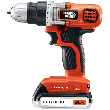Repairing Water Damaged Walls
Written by Lee Wyatt (last updated June 10, 2020)
Have you ever looked at your wall, and found a patch of it to be a different color than the rest? If that patch grows over time, and particularly if that patch starts to bubble, then you may have a busted leak in your walls. While repairing a leak in the wall can be a little frustrating, perhaps the most frustrating part of the whole mess is needing to fix the water damage to your wall. Repairing water damaged walls isn't something that is particularly hard, just a little time consuming.
- 1 Fix the leak. Initially, before you can even really begin repair water damaged walls, you need to fix the leak that caused the water damage. The best way to get this done properly is to hire a professional plumber to come out and inspect the pipes as quickly as possible. Of course, you should always turn your water off as soon as you see any water damaged areas so that the damage does not spread.
- Cut a hole. After you have repaired the leak, cut out a few holes near the water damaged area of the walls. This will help to provide ventilation for the area that has the water damage, and help dry it out quicker. These holes should be about 4 inches square, and should be located near each end of the joist or stud. If you find any insulation that is wet, then you need to remove that as well.
- Allow the wall to dry. Simply allow your walls to dry out. This can take a day or two, so don't be in to big of a hurry. Properly allowing your walls to dry will reduce the risk of any mold or mildew growing in the walls, and becoming a health hazard later on. Fans and dehumidifiers can be used to help ensure that you have a completely dry wall, and actually help speed up the process a little bit.
- Patch the hole. Once your wall has dried, it is time to patch it up. This is a step that is fairly easy to do, and has been discussed in detail on the Home.Tips.Net website. Simply type in the phrase "Fixing a Hole in a Wall" into the search box and you will find the article discussing this. Be sure that you have replaced any insulation that you removed prior to patching the hole.
- Prime the wall. After you have patched all of the holes that you put into your wall, you will need to prime the wall. By priming the wall, you will also be preparing it for later painting, and protecting the wall from any stains. Typically you will want to use an oil-based sealer, since a latex-based sealer may allow water stains to seep through again. For a more even coloring, you may want to prime the entire wall, rather than just the damaged area.
- Repaint the wall. Once you have finished priming the wall, all you really need to do is repaint the area. Great care should be taken to match the existing paint scheme when you are doing this step though. For this reason, I would recommend that you repaint the entire wall, simply to make sure that you have the paint matched properly.
Author Bio
Lee Wyatt
Contributor of numerous Tips.Net articles, Lee Wyatt is quickly becoming a regular "Jack of all trades." He is currently an independent contractor specializing in writing and editing. Contact him today for all of your writing and editing needs! Click here to contact. Learn more about Lee...
Choosing a Top Coat
If you have ever done your own woodworking, then you know just how important the top coat can actually be. With the ...
Discover More
Controlling High Blood Sugar
Whether you are currently diabetic, or simply afraid you may become diabetic, learning methods of controlling high blood ...
Discover More
Organizing for School
Whether it is university, college, or some other kind of school, getting ready for school is an important step in ...
Discover More
More Home Improvement Tips
Finishing Drywall
Just because you have hung your drywall doesn't mean that you are finished. Finishing drywall is a completely different ...
Discover More
Repairing Cracks in Plaster Walls
While plaster may be a very popular building material, it is also somewhat susceptible to cracks. If you don't take the ...
Discover More
Using a Power Cleaner on Your Walls
For particularly dirty walls, you may want to consider using a power cleaner. Using a power cleaner on your walls is a ...
Discover More

Comments